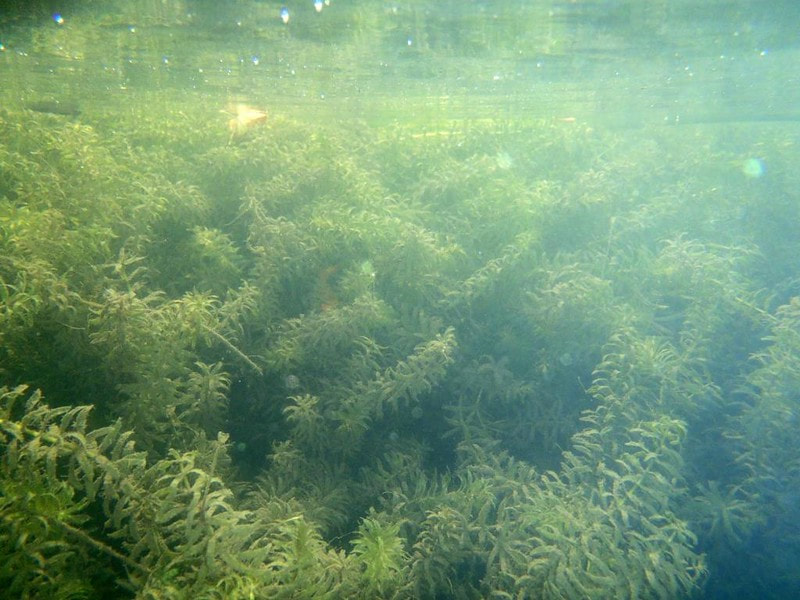|
Starting today, the Florida Fish and Wildlife Conservation Commission (FWC) will begin conducting necessary, non-native aquatic plant control efforts to portions of lakes located in Sumter, Citrus, Levy, and Marion Counties — an effort that will treat more than 4000 acres of invasive plants currently encroaching on the space of Florida's native aquatic species. Control efforts will be conducted between Monday, May 8, and Friday, May 12 on Sumter County's Panasoffkee, weather depending, to reduce levels of the invasive Hydrilla Verticillata — or more commonly referred to as water thymes. The control method will entail using the administration of ProcellaCOR herbicides injected beneath the water's surface; an herbicide the FWC says has been approved by The U.S. Environmental Protection Agency (EPA) and the Florida Department of Agriculture and Human Services (FDACS). The following week starting on Monday, May 15 will see similar treatments conducted on a reservoir of the Withlacoochee River, Lake Rousseau, which will stretch across Citrus, Levy, and Marion Counties. As of publication, there are currently no restrictions or further alerts regarding the use of these lakes for irrigation, fishing, or swimming; however, one could be issued at a later date, if needed. But what even are Hydrilla? How did they get here, what threats to Florida's ecosystems do these invasive plants pose? Is treatment necessary? According to the Cornell Cooperative, water thymes are considered one of the most aggressive aquatic plants to invade North America. This perennial herb's first appearance in the wild was documented in Florida after being imported to a tropical fish and aquatic plant dealer in Missouri from Sri Lanka. The Missouri Dealer sent some to another dealer in Tampa, who was not impressed with what they received. Instead of throwing it in the trash, the Tampa Dealer's son disposed of the plants in a nearby canal, where they quickly began a lush growth. This changed the dealer's mind; he began growing them in canals and selling them as an aquarium plant under the name 'Indian Starvine'. Other deals soon followed, and the dumping of the invasive plant onto boats and boat trailers helped to move the species further into U.S. waterways. The species' ability to thrive in various conditions gives it a huge advantage regardless of where it settles; it easily out-competes plants native to Sunshine State waterways, resulting in a reduction in aquatic eco-diversity. Infestations can cause harm to native fish populations by causing large amounts of oxygen depletion, ultimately leading to fish kills. Their presence can also result in toxic algae blooms that are harmful to humans, also leading to further issues with oxygen depletion and increasing fish kill potential. Hydrilla can often be easily spread by boaters traveling through waterways as well. If left unchecked, infestations can clog up rivers and other bodies of water and make recreational activities difficult or impossible, resulting in a potential economic impact on nature-based tourism hubs. The FWC manages hydrilla on a lake-by-lake basis, using a collaborative approach across two state-wide programs. According to the FWC, managing and treating the aggressive aquatic plant is necessary for protecting the health of Florida's waters while also enabling their continued recreational use. To learn more about the herbicides used, view lake treatment schedules, and review potential future treatments and their subsequent restrictions (or lack thereof), and more, check out the FWC's interactive 'What's Happening on my Lake' map tool here, and their Invasive Plant Management page here. Article by Rachael Volpe
0 Comments
Your comment will be posted after it is approved.
Leave a Reply. |
CATEGORIES |
|
|
Vertical Divider
|
Can't get enough?Uncover more of Florida through our channels below!
|
© COPYRIGHT 2015. ALL RIGHTS RESERVED.


 RSS Feed
RSS Feed